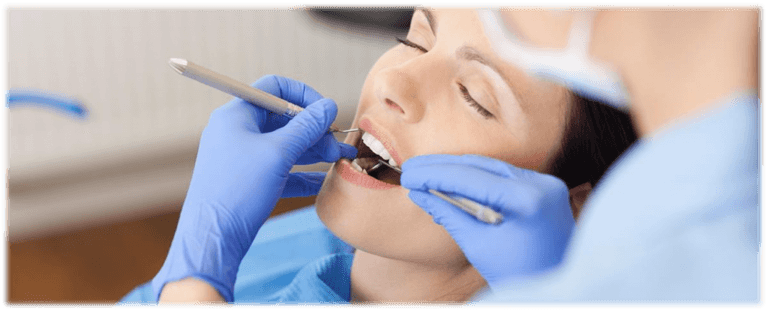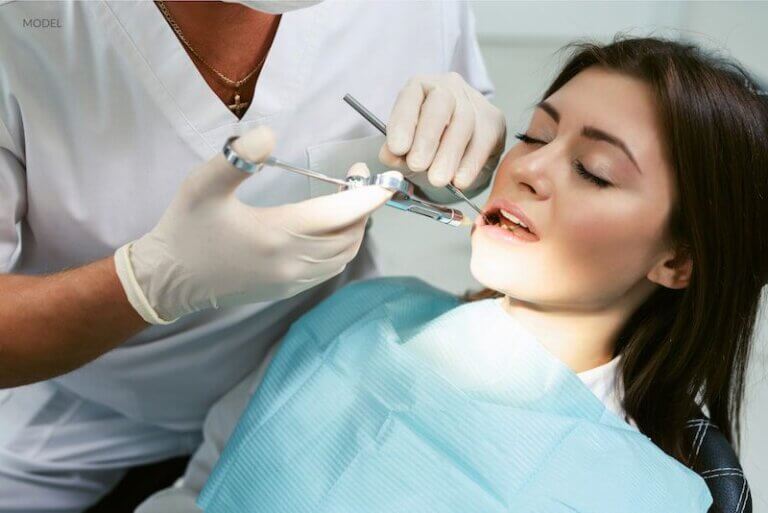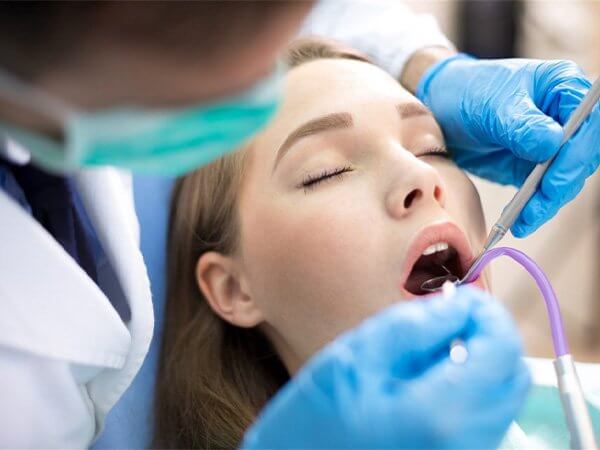Oral Conscious Sedation

What Is Oral Conscious Sedation?
Oral conscious sedation is a safe and effective solution for people who experience dental fear or anxiety. Unlike general anesthesia, oral conscious sedation allows patients to stay awake and responsive during dental procedures, yet relaxed and stress-free.
This technique involves taking a prescribed medication, typically in the form of a pill or liquid, that induces a calm, tranquil state. Common medications used for this type of sedation are benzodiazepines, which are known for their relaxing effects. If you’re someone who feels uneasy at the dentist, oral conscious sedation could be the answer to transforming your dental experience.
Before considering oral conscious sedation, your dentist will assess your suitability for this sedation option, ensuring it’s the right choice for your medical history and treatment needs. Before you deciding on whether Oral Conscious Sedation are right for you, there are some things you should know:
- Who Is a Good Candidate for Oral Conscious Sedation?
- Benefits Of Oral Conscious Sedation
- Alternative Treatments To Oral Conscious Sedation
- How Much Does Oral Conscious Sedation Cost?
- What Kinds Of Oral Sedation Medications Do You Use?
- Steps In The Oral Conscious Sedation Procedure
- Frequently Asked Questions About Oral Conscious Sedation
If you have any further questions about oral conscious sedation or other dental services offered at Atlas Dental, please contact us.

Free phone consultation
Have questions about Oral conscious sedation? Schedule a free phone consultation with our Toronto dentist.

5 star google reviews
Our patients love us! See for yourself why more and more people are choosing Atlas Dental for Oral conscious sedation.

Book In Person Consult Online
Book an in-person consult to discuss your Oral conscious sedation case.
Who Is a Good Candidate for Oral Conscious Sedation?
Oral conscious sedation is ideal for individuals who experience dental anxiety or fear, or for those who may need extensive dental procedures. Here are some common scenarios where oral conscious sedation can help:
- Dental Anxiety and Phobia: If you fear dental visits or have had negative past experiences at the dentist, this sedation can help ease your worries.
- Gag Reflex Sensitivity: A sensitive gag reflex can make dental procedures uncomfortable. Oral conscious sedation can help reduce this reflex.
- Complex Dental Procedures: For lengthy treatments such as implants, extractions, or root canals, oral sedation keeps you calm and relaxed.
- Inability to Sit Still: If you’re unable to remain still for long periods, oral sedation can help you relax during longer procedures.
- Sensitive Teeth or Gums: Those with sensitive teeth or gums may find sedation helps make procedures more comfortable.
- Multiple Treatments in One Visit: If you need several treatments, oral sedation allows multiple procedures to be done in one session.
If you find dental visits nerve-wracking or have any of the aforementioned concerns, talking to your dentist about oral conscious sedation could be the first step towards a more relaxed and positive dental experience. If you have further questions about Oral Conscious Sedation, please contact us.

Benefits Of Oral Conscious Sedation
Oral conscious sedation offers a range of advantages for patients who experience anxiety or discomfort during dental procedures. Here’s why it might be the solution you’ve been looking for:
- Reduced Anxiety and Fear: The calming effects of the sedative help alleviate dental anxiety, allowing you to feel relaxed throughout your appointment.
- Increased Cooperation: With reduced anxiety, you’ll be able to cooperate more easily, allowing your dentist to work more efficiently.
- No Needles or IVs: Oral sedation doesn’t require injections or IVs, which is great for those afraid of needles.
- Amnesia Effect: Many patients experience little to no memory of the procedure, reducing the likelihood of negative associations with dental visits.
- Multiple Treatments in One Visit: Oral sedation can make it possible to complete multiple dental treatments during a single visit, which can save you time and reduce the number of appointments required.
- Safe and Customizable: The sedation process is personalized to fit your unique needs and medical history, ensuring safety and comfort throughout your treatment.
It’s essential to remember that oral conscious sedation should always be administered by a qualified dental professional who is trained in sedation dentistry. If you have further questions about Oral Conscious Sedation, please contact us.
Alternative Treatments To Oral Conscious Sedation
If you’re unsure about using oral conscious sedation, there are alternative sedation methods available:
- Nitrous Oxide (Laughing Gas): This mild sedative is inhaled through a mask and wears off quickly, allowing you to resume normal activities right after your treatment.
- Local Anesthesia: For most dental procedures, local anesthesia can numb the area to prevent pain without the need for sedation.
- IV Sedation: Intravenous (IV) sedation provides a deeper level of sedation for patients who require more significant relaxation or for complex dental treatments.
- Counseling or Behavioral Therapy: For severe dental anxiety, therapies like cognitive behavioral therapy (CBT) can help address the root causes of fear.
Your dentist will discuss your options and help you choose the best sedation method based on your needs and health profile. If you have further questions about Oral Conscious Sedation, please contact us.

Cost Of Oral Conscious Sedation
Oral conscious sedation usually starts at six units (100 minutes) of monitored time and costs $233. The codes relevant to Oral conscious sedation in the Ontario Dental Association’s Suggested Fee Guide appear as follows:
Oral Sedation – Sedation sufficient to require monitored care. Time is to be measured from the start of the patient monitoring to release from the treatment/recovery room
- 92426 – Six units (90 minutes): $233
- 92427 – Seven units (105 minutes): $261
- 92428 – Eight units (120 minutes): $289
- 92429 – Each additional unit over eight (15 minutes): $28
Oral conscious sedation is usually considered a basic service under dental insurance plans and should be covered to your maximum insurable limit, but be sure to find out from your dental insurance plan provider how much you are eligible for before going ahead with dental treatment. Our fees are consistent with the ODA Fee Guide.
For patients without dental insurance, Atlas Dental is pleased to offer dental financing through iFinance Dentalcard. Affordable payment plans start at 7.95% for terms of 6 months to 6 years. To learn more about Dentalcard dental treatment financing, follow this link.
What Kinds Of Oral Sedation Medications Do You Use?
The most commonly used medications for oral conscious sedation are Lorazepam and Triazolam, both of which belong to the benzodiazepine class. These medications work by slowing down brain activity to reduce anxiety and induce a calming effect:
- Lorazepam: A longer-acting sedative that can help you remain calm and relaxed throughout the procedure.
- Triazolam: A faster-acting medication with a shorter duration of effect, ideal for quicker procedures.
Your dentist will prescribe the medication best suited to your procedure and medical history. If you have further questions about Oral Conscious Sedation, please contact us.
Steps In The Oral Conscious Sedation Procedure
Here’s what you can expect during the oral conscious sedation procedure:
- Consultation and Evaluation: Your dentist will assess your medical history and suitability for sedation.
- Preparation: You’ll receive detailed pre-visit instructions, such as fasting before the procedure and arranging for transportation home.
- Sedation Administration: You’ll take the prescribed medication before your appointment.
- Monitoring: Your vital signs will be monitored throughout the procedure to ensure safety.
- Recovery: After the procedure, you’ll be monitored as the sedative wears off. You’ll need someone to drive you home.
- Follow-Up: A follow-up appointment may be scheduled to check your recovery and comfort. Please be sure to read our post-visit instructions.
Throughout the entire process, your dental team will prioritize your comfort and safety, making the dental experience as stress-free and positive as possible. If you have further questions about Oral Conscious Sedation, please contact us.
Frequently Asked Questions About Oral Conscious Sedation
- Is oral conscious sedation safe?
Yes, oral conscious sedation is safe when administered by a trained professional. Your dentist will evaluate your health to ensure it’s appropriate for you.
- How long does the sedation last?
The effects of oral conscious sedation can last several hours, but you’ll be monitored during the procedure to ensure your safety.
- Can I eat before my sedation appointment?
Your dentist will provide specific instructions, but typically, you may be asked to avoid eating for several hours before your appointment. Please read our dental sedation pre-visit instructions.
- Will I feel pain during the procedure?
No, oral conscious sedation helps you relax, and local anesthesia will be used to numb the treatment area, ensuring no pain during the procedure.
For more information or to schedule a consultation, contact us at Atlas Dental today to learn more about how oral conscious sedation can help you have a more comfortable and stress-free dental visit.

